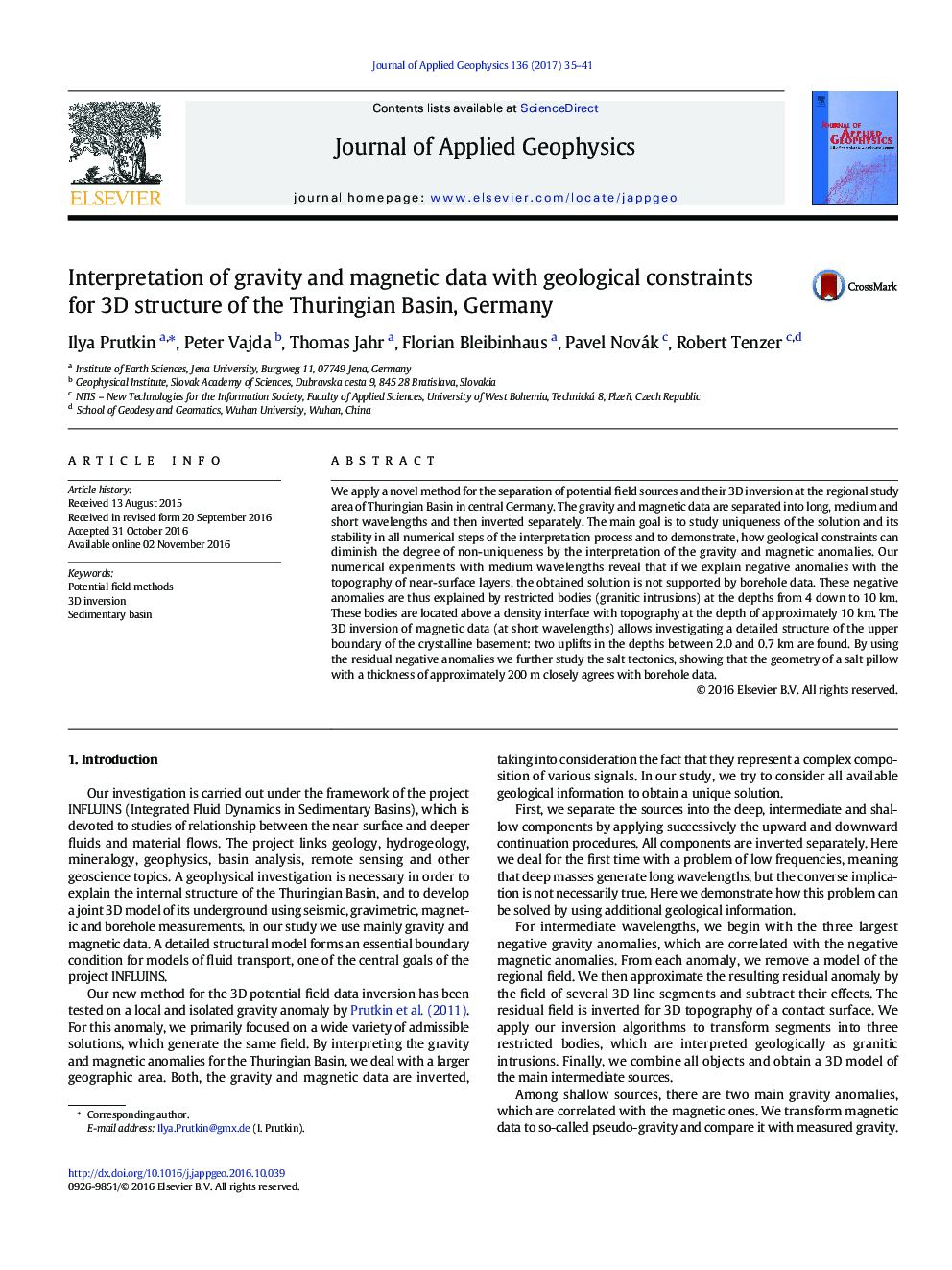| Article ID | Journal | Published Year | Pages | File Type |
|---|---|---|---|---|
| 4739670 | Journal of Applied Geophysics | 2017 | 7 Pages |
Abstract
We apply a novel method for the separation of potential field sources and their 3D inversion at the regional study area of Thuringian Basin in central Germany. The gravity and magnetic data are separated into long, medium and short wavelengths and then inverted separately. The main goal is to study uniqueness of the solution and its stability in all numerical steps of the interpretation process and to demonstrate, how geological constraints can diminish the degree of non-uniqueness by the interpretation of the gravity and magnetic anomalies. Our numerical experiments with medium wavelengths reveal that if we explain negative anomalies with the topography of near-surface layers, the obtained solution is not supported by borehole data. These negative anomalies are thus explained by restricted bodies (granitic intrusions) at the depths from 4 down to 10Â km. These bodies are located above a density interface with topography at the depth of approximately 10Â km. The 3D inversion of magnetic data (at short wavelengths) allows investigating a detailed structure of the upper boundary of the crystalline basement: two uplifts in the depths between 2.0 and 0.7Â km are found. By using the residual negative anomalies we further study the salt tectonics, showing that the geometry of a salt pillow with a thickness of approximately 200Â m closely agrees with borehole data.
Related Topics
Physical Sciences and Engineering
Earth and Planetary Sciences
Geophysics
Authors
Ilya Prutkin, Peter Vajda, Thomas Jahr, Florian Bleibinhaus, Pavel Novák, Robert Tenzer,
